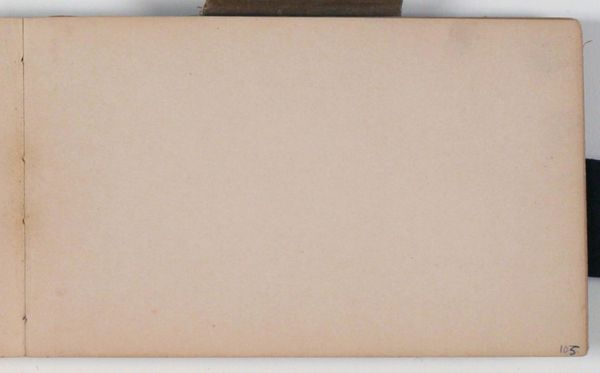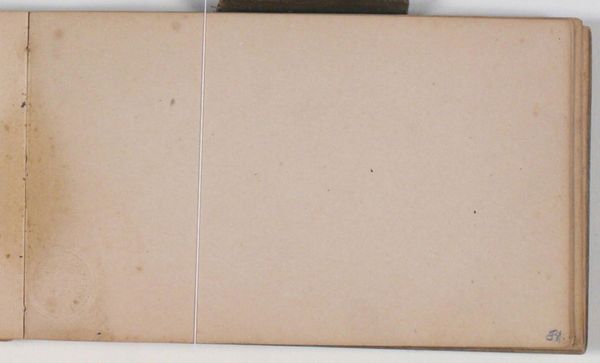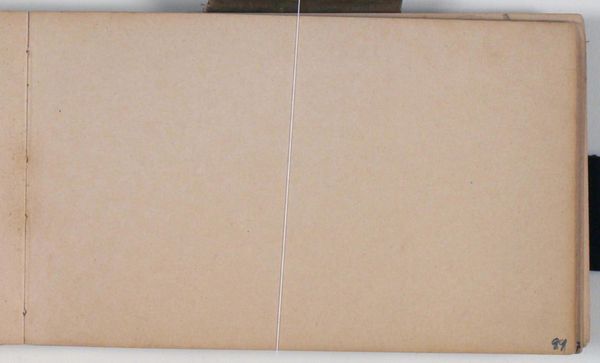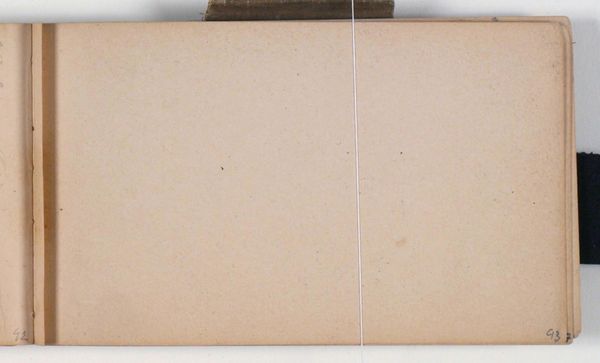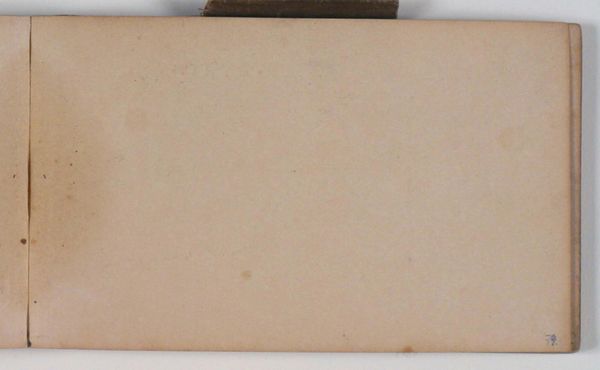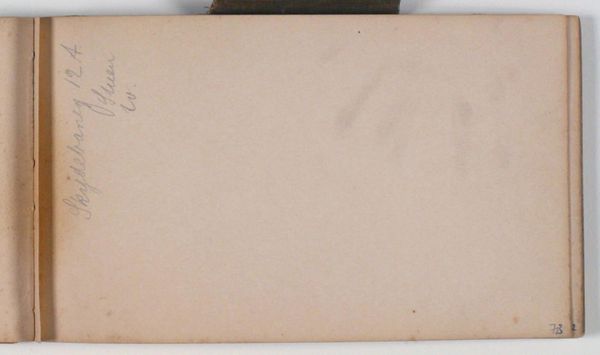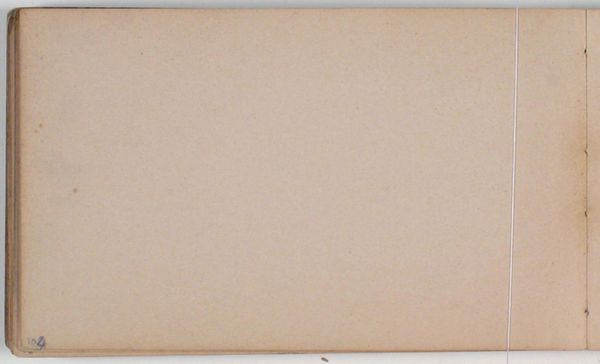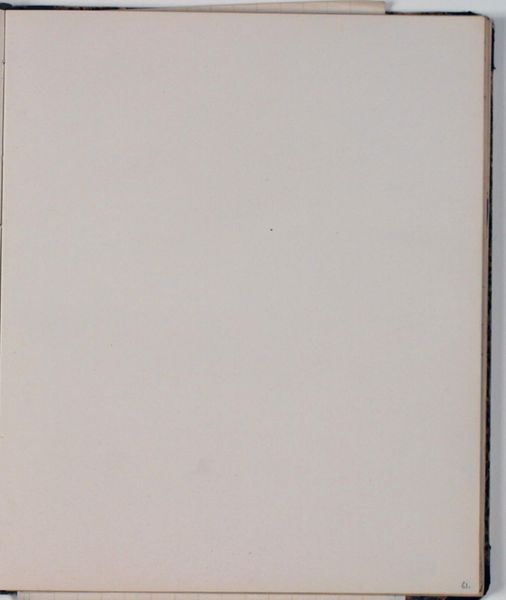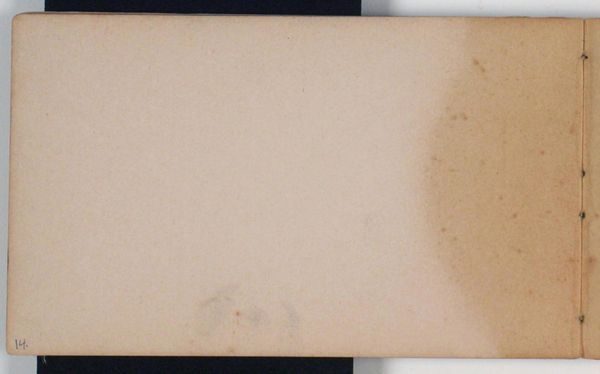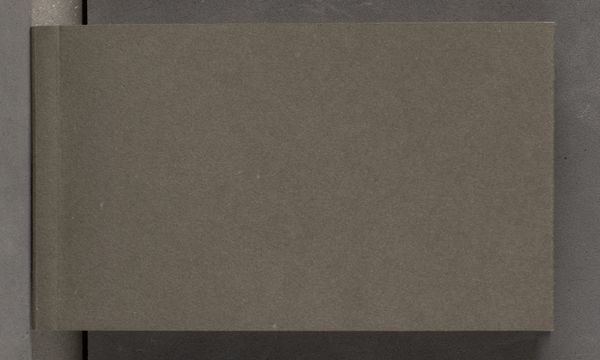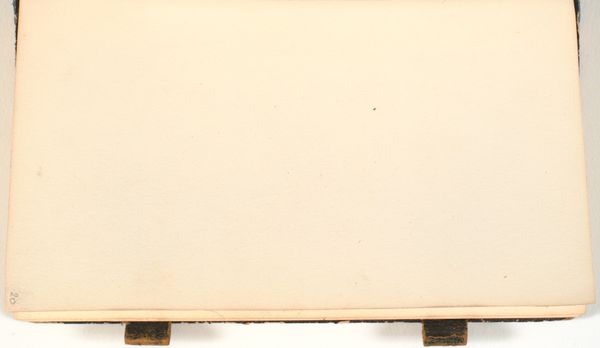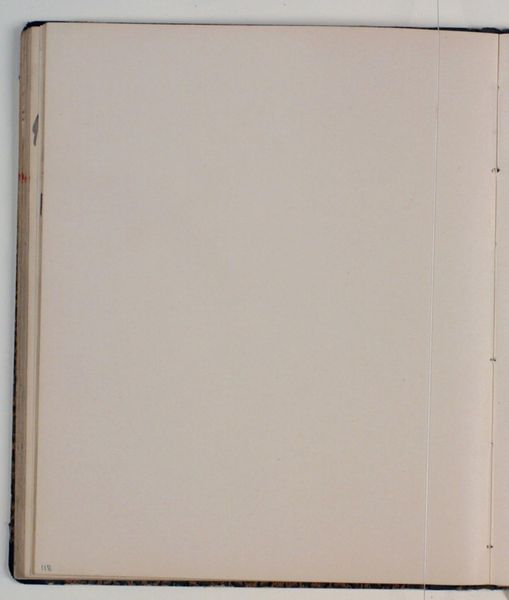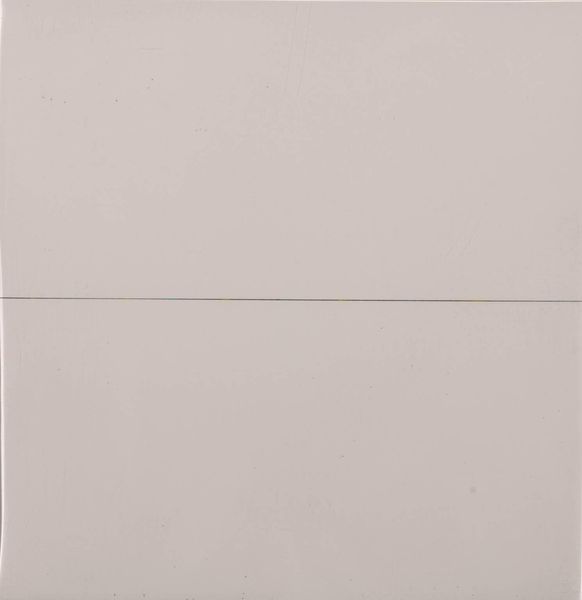
Dimensions: 101 mm (height) x 168 mm (width) (bladmaal)
Editor: We're looking at Niels Larsen Stevns' "Blank" from 1896, created with watercolor and colored pencil on paper. It’s… well, it's literally blank. It’s almost aggressively simple. What is there to learn from an empty page? Curator: The emptiness is the point. Think about the paper itself. Who made it? What materials were used? Consider the industrial processes involved even in 1896 to produce this seemingly untouched surface. This ‘Blank’ page is the product of significant labor. Editor: That’s fascinating. So, you're saying its value lies in recognizing the unseen production behind it? Curator: Precisely. We often overlook the means of production and focus solely on the finished artwork. Here, Stevns is making us confront the materiality. What sort of pencil? How was the watercolor produced and dispersed at the time? It makes you question what is art. Editor: That’s… a really interesting perspective. So it challenges this sort of conventional hierarchy of art? Curator: Absolutely! We’re invited to dismantle the distinction between raw material, labor, and ‘high art.’ What expectations do we have of art? How does it relate to society as a whole? The materials themselves contain traces of a whole world. Editor: I hadn’t thought about it like that at all. It makes me wonder how artists thought about materials differently back then, compared to now. Curator: And what possibilities does this offer for contemporary practice, acknowledging the materials we use, even "nothingness," and the resources and power relations ingrained in artistic creation? Editor: Wow. I will definitely never look at a blank page the same way.
Comments
No comments
Be the first to comment and join the conversation on the ultimate creative platform.
